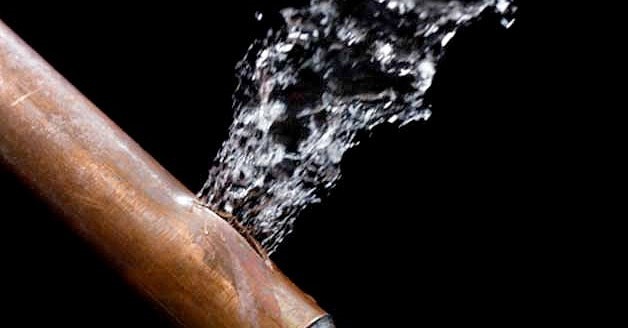Six Proven Methods to Detect Hidden Water Line Leaks Secretly
Six Proven Methods to Detect Hidden Water Line Leaks Secretly
Blog Article
Are you currently trying to find content about Leaking water lines?

Early discovery of leaking water lines can mitigate a potential disaster. Apart from saving you cash, it will decrease the aggravation as well as frustration. The minute you find a leak, calling your plumber for repair work is the most effective remedy. Some tiny water leakages may not be noticeable. If you can not identify it with your nude eyes, right here are some hacks that help.
1. Take A Look At the Water Meter
Every home has a water meter. Inspecting it is a guaranteed manner in which aids you find leakages. For beginners, turn off all the water sources. Guarantee no person will certainly purge, make use of the tap, shower, run the washing device or dishwashing machine. From there, go to the meter as well as watch if it will change. Since no person is utilizing it, there should be no activities. That suggests a fast-moving leakage if it relocates. Likewise, if you find no changes, wait a hr or more as well as check back again. This suggests you may have a sluggish leak that might even be below ground.
2. Examine Water Intake
Assess your water costs and track your water usage. As the one paying it, you ought to observe if there are any kind of discrepancies. If you spot sudden changes, despite your consumption coinciding, it suggests that you have leakages in your plumbing system. Bear in mind, your water costs need to drop under the very same array every month. An abrupt spike in your bill indicates a fast-moving leakage.
A steady boost every month, also with the same routines, shows you have a sluggish leakage that's additionally slowly escalating. Call a plumber to completely examine your residential property, particularly if you really feel a warm area on your floor with piping beneath.
3. Do a Food Coloring Examination
30% comes from commodes when it comes to water consumption. Examination to see if they are running properly. Decline specks of food shade in the container and also wait 10 mins. If the shade in some way infiltrates your bowl throughout that time without flushing, there's a leak in between the container and dish.
4. Asses Outside Lines
Don't forget to inspect your exterior water lines too. Test faucets by attaching a garden pipe. Must water leak out of the link, you have a loose rubber gasket. Replace this and also ensure all connections are tight. It will aid obtain it properly checked out and also preserved every year if you've got a sprinkler system. One little leakage can lose tons of water and increase your water costs.
5. Assess the situation and examine
Homeowners must make it a routine to check under the sink counters and even inside cupboards for any type of bad odor or mold development. These 2 red flags show a leak so prompt interest is called for. Doing regular evaluations, even bi-annually, can save you from a significant trouble.
If you know your home is currently old, maintain a watchful eye on your heating units, hose pipes, pipes etc. Check for stainings and also damaging as the majority of devices as well as pipes have a life expectancy. They will certainly additionally naturally degrade because of tear and also put on. If you presume dripping water lines in your plumbing system, don't wait on it to rise. Call a professional plumber as soon as possible so you do not wind up with a dreadful mess in your house.
Early detection of leaking water lines can mitigate a prospective calamity. Some tiny water leakages may not be visible. Examining it is a proven way that helps you discover leaks. One little leakage can throw away tons of water as well as surge your water expense.
If you think leaking water lines in your plumbing system, don't wait for it to intensify.
WARNING SIGNS OF WATER LEAKAGE BEHIND THE WALL
PERSISTENT MUSTY ODORS
As water slowly drips from a leaky pipe inside the wall, flooring and sheetrock stay damp and develop an odor similar to wet cardboard. It generates a musty smell that can help you find hidden leaks.
MOLD IN UNUSUAL AREAS
Mold usually grows in wet areas like kitchens, baths and laundry rooms. If you spot the stuff on walls or baseboards in other rooms of the house, it’s a good indicator of undetected water leaks.
STAINS THAT GROW
When mold thrives around a leaky pipe, it sometimes takes hold on the inside surface of the affected wall. A growing stain on otherwise clean sheetrock is often your sign of a hidden plumbing problem.
PEELING OR BUBBLING WALLPAPER / PAINT
This clue is easy to miss in rooms that don’t get much use. When you see wallpaper separating along seams or paint bubbling or flaking off the wall, blame sheetrock that stays wet because of an undetected leak.
BUCKLED CEILINGS AND STAINED FLOORS
If ceilings or floors in bathrooms, kitchens or laundry areas develop structural problems, don’t rule out constant damp inside the walls. Wet sheetrock can affect adjacent framing, flooring and ceilings.
https://www.servicemasterbyzaba.com/blog/how-to-detect-water-leakage-in-walls/

I found that blog posting about Detecting hidden plumbing leaks while doing a search on the internet. Enjoyed reading our posting? Please share it. Help another person find it. Thanks a bunch for your time. Please stop by our website back soon.
Source This Article Report this page